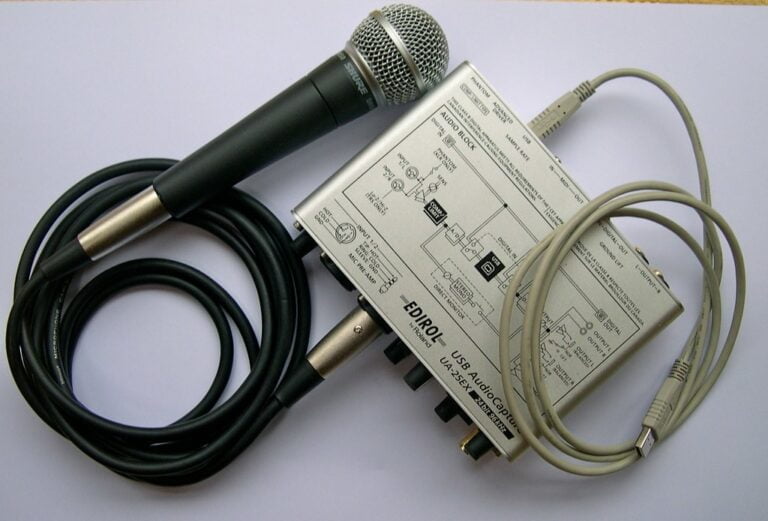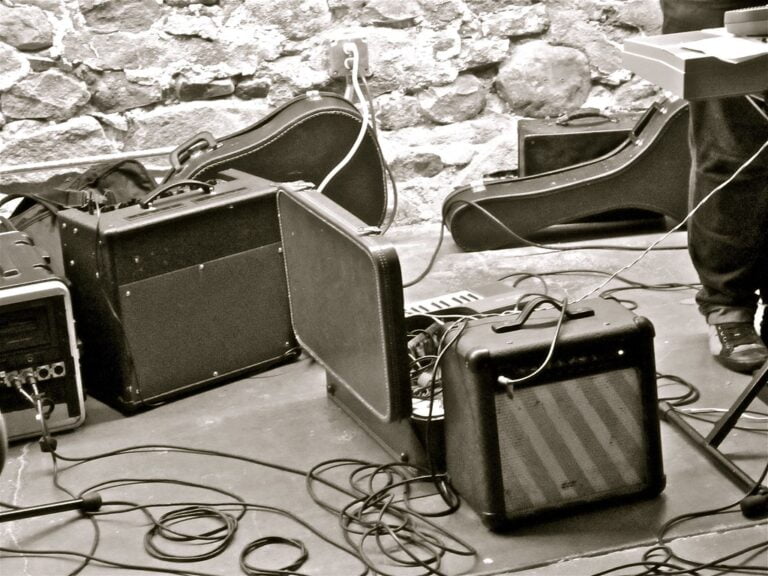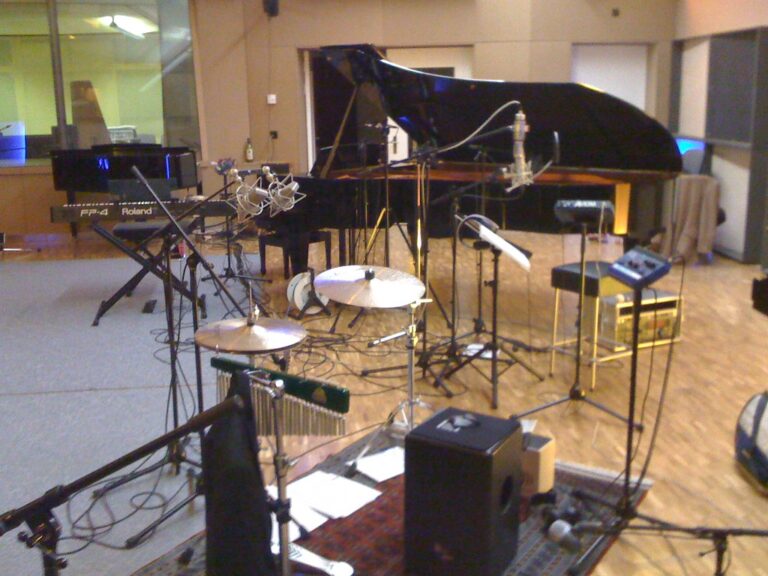Microphone Etiquette: Best Practices for Recording With Multiple Mics
Proper microphone etiquette is essential for recording with multiple mics. Guarantee microphones are positioned facing away from each other to minimize interference and unwanted bleed. Pay attention to specific angles to reduce phase issues and ensure well-balanced sound capture. Equidistant positioning of participants and clear, direct speaking into the microphones are key for top-notch audio quality. These practices lead to professional recordings with minimal disruptions and improved sound clarity.
We are supported by our audience. When you purchase through links on our site, we may earn an affiliate commission, at no extra cost for you. Learn more.
Proper Microphone Placement for Clarity
For ideal clarity in recordings, correct microphone placement plays an essential role in minimizing interference and maximizing audio quality. When setting up multiple microphones, it is important to position them facing away from each other to reduce interference and guarantee a clean sound. Placing microphones too close to each other can result in unwanted bleed, where sound from one mic leaks into another, causing distortion and muddiness in the recording. To avoid this, participants should face each other directly, allowing the microphones to capture their voices clearly without picking up excessive background noise.
In multi-mic setups, angling the microphones at specific degrees, such as 120 degrees for three mics, can help reduce phase issues and improve audio quality. Equidistant positioning of microphones is also critical to ensure balanced sound capture in group recordings. By using this method, each microphone captures sound from the participants equally, creating a cohesive and well-balanced audio mix. Proper microphone placement not only enhances audio quality by minimizing background noise but also guarantees that each voice is captured accurately, resulting in professional-grade recordings.
Minimizing Mic Bleed in Group Recordings
To prevent unwanted sound interference in group recordings, make sure microphones are positioned facing away from each other to minimize mic bleed. Mic bleed, also known as microphone bleed, occurs when a microphone picks up sound from sources other than the intended source, leading to a decrease in audio quality. When participants speak close to their respective microphones and directly into them, mic bleed is reduced as the sound is captured more directly, enhancing audio quality.
In group recordings, maintaining essential microphone angles is vital for enhanced separation and reduced mic bleed. Ensuring an equidistant seating arrangement further minimizes mic bleed and helps maintain audio quality in group setups. By strategically placing microphones and directing participants to speak clearly and directly into their mics, you can notably reduce unwanted sound interference and improve the overall audio recording quality.
Guidelines for Optimal Mic Angles
Placing microphones at specific angles is important in achieving excellent sound quality and minimizing unwanted interference in multi-microphone setups. When using 2 microphones, positioning them facing away from each other is key to minimize interference and achieve the best audio. This setup helps you avoid phase cancellation issues and guarantees a clean sound capture. For 3 microphones, angling them at 120 degrees apart can optimize audio separation, reducing bleed and enhancing sound clarity.
In setups with 4 microphones, angling them at 90 degrees from each other can provide balanced coverage and further reduce bleed. Proper mic angles are essential to prevent phase cancellation and ensure that each mic captures its intended sound source without interference. Adjusting the mic angles correctly can greatly improve the overall sound quality of your recordings.
To set up the ideal mic angles, consider using a microphone stand that allows for precise adjustments. This will help you position the mics accurately and maintain their angles throughout the recording session. By following these guidelines for mic angles, you can achieve the best audio quality in your multi-microphone setups.
Equidistant Positioning of Participants
When positioning multiple participants in a recording setting, ensuring equidistant placement from each microphone is essential for achieving consistent sound quality. Here are four important considerations for equidistant positioning of participants:
- Minimizing Mic Bleed: Equidistant positioning helps reduce mic bleed, where sound from one participant’s voice enters another participant’s microphone. This interference can cause distortions and muddiness in the recording, affecting overall audio quality.
- Balancing Different Frequencies: Equidistant placement ensures that all participants’ voices reach the microphones at similar levels. This helps in balancing different frequencies produced by each participant, resulting in a more harmonious and well-rounded sound mix.
- Optimizing Audio Balance: Equal distance from microphones contributes to an ideal audio balance. When participants are equidistant, it becomes easier to adjust individual audio levels during post-production, leading to a more coherent and polished final recording.
- Enhancing Sound Quality: Consistent equidistant positioning of participants from the microphones enhances sound quality by maintaining a uniform audio capture across all channels. This uniformity is key to achieving clarity and coherence in group recordings, ensuring a professional and balanced listening experience.
Studio Layout Considerations for Multiple Mics
Consider the spatial arrangement of microphones in a studio setting to optimize sound quality and minimize interference in multi-mic recordings. Proper microphone placement is essential for reducing mic bleed and enhancing audio quality. When setting up multiple microphones, it’s vital to make sure they are equidistant from each other and the participants. This arrangement helps in achieving balanced audio capture across all mics.
Moreover, each microphone should be positioned to face away from the others to prevent unwanted sound interference. Participants should speak directly into their designated microphones to improve sound separation and clarity in the recording. Utilizing pop filters can also help in reducing plosive sounds and further enhance the quality of the audio.
Visual aids, such as diagrams or pictures demonstrating a 4-mic setup, can be beneficial in illustrating the ideal studio layout for multi-mic recordings. By following these guidelines and paying attention to the studio layout, you can minimize interference and maximize audio clarity in your multi-mic recording environment. Studio layout considerations are paramount in creating a conducive recording space that optimizes the performance of electronic devices and ensures high-quality audio production.







